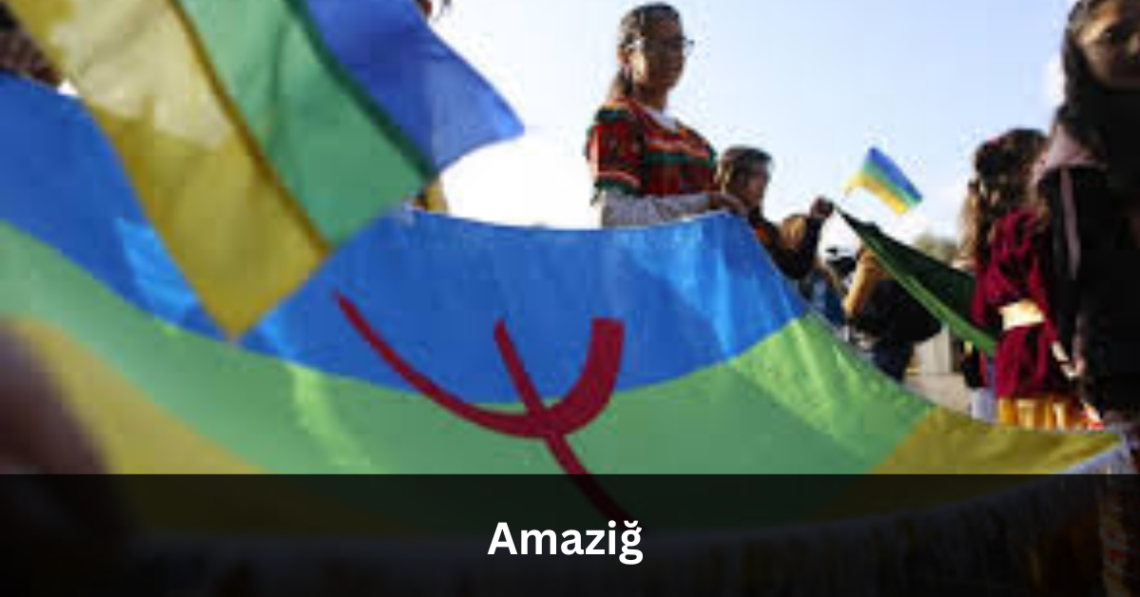
Amaziğ – The Ultimate Guide For You!
Nestled amidst the rugged landscapes of North Africa lies a vibrant and ancient culture that has stood the test of time—the Amazigh people.
Often referred to as Berbers, the Amazigh are renowned for their rich cultural heritage, distinctive language, and resilient spirit.
In this article, we embark on a journey to explore the multifaceted world of the Amazigh, unraveling the layers of their history, language, traditions, and contemporary relevance.
The Origins of the Amazigh – Here To Know!
The history of the Amazigh people is as ancient as the land they inhabit. Scholars believe that the Amazigh are indigenous to North Africa, with roots tracing back thousands of years to the prehistoric era. Over millennia, the Amazigh have inhabited the Maghreb region, including modern-day Morocco, Algeria, Tunisia, Libya, and parts of Mauritania, Mali, and Niger, shaping the cultural landscape of the region through their diverse customs, beliefs, and contributions.
Central to Amazigh identity is the Berber language, a complex and nuanced linguistic heritage that has evolved over centuries. The Berber language family encompasses numerous dialects and variations, reflecting the diverse cultural and geographical landscape of the Amazigh people. Despite centuries of cultural assimilation and linguistic influences, the Berber language remains a symbol of Amazigh identity and resistance, with ongoing efforts to preserve and promote its usage in modern society.
Cultural Traditions and Customs – Read Now!
The Amazigh people are renowned for their rich tapestry of cultural traditions, encompassing music, dance, art, cuisine, and craftsmanship. From the rhythmic beats of the bendir drum to the intricate geometric patterns of Amazigh carpets, each aspect of Amazigh culture reflects a deep connection to the land, history, and community. Traditional festivals and ceremonies, such as the Imilchil Marriage Festival and the Guedra dance of the Tuareg, serve as vibrant expressions of Amazigh identity and heritage.

Throughout history, the Amazigh people have faced numerous challenges, including colonization, cultural marginalization, and political upheaval. Despite these adversities, the Amazigh have demonstrated remarkable resilience, preserving their cultural traditions, language, and collective memory through generations. From ancient Berber kingdoms like Numidia and Mauretania to the modern Amazigh cultural renaissance, the legacy of the Amazigh continues to endure as a testament to their strength and endurance.
Contemporary Relevance and Challenges – Everything To Know!
In contemporary North African society, the Amazigh cultural revival is gaining momentum, with renewed efforts to reclaim and celebrate Amazigh identity and heritage. However, challenges persist, including linguistic discrimination, socioeconomic disparities, and political marginalization. Efforts to promote Amazigh language and culture face ongoing obstacles, highlighting the need for greater recognition, inclusion, and support for Amazigh rights and representation in the modern era.
Beyond North Africa, the influence of the Amazigh reaches far and wide, with diaspora communities scattered across the globe. From France to Canada, the United States to Australia, Amazigh immigrants and their descendants contribute to the cultural tapestry of their adopted countries while maintaining strong ties to their ancestral homeland. Through cultural festivals, language courses, and community organizations, the Amazigh diaspora plays a vital role in preserving and promoting Amazigh identity and heritage on a global scale.
Conclusion:
Amazigh people represent a living testament to the resilience, diversity, and cultural richness of North Africa. From their ancient origins to their contemporary struggles and triumphs.
FAQs:
1. Who are the Amazigh people?
The Amazigh, also known as Berbers, are indigenous peoples of North Africa with a rich cultural heritage spanning thousands of years.
2. What languages do the Amazigh people speak?
The Amazigh people speak various dialects of the Berber language, a linguistic family with diverse regional variations.
3. What are some traditional customs of the Amazigh?
Amazigh traditions include vibrant music, colorful festivals like the Imilchil Marriage Festival, and intricate craftsmanship seen in items like Amazigh carpets.
4. What challenges do the Amazigh face today?
Contemporary challenges for the Amazigh include linguistic discrimination, socioeconomic disparities, and political marginalization in North African societies.
5. Where can I find Amazigh communities outside of North Africa?
Amazigh diaspora communities can be found worldwide, contributing to global cultural diversity while maintaining ties to their ancestral homeland.
6. How can I learn more about Amazigh culture and heritage?
Learning resources such as cultural festivals, language courses, and community organizations offer opportunities to explore and celebrate Amazigh identity and heritage.
You May Also Like

Unveiling the Life and Achievements of Melanie Lynn Clapp
April 16, 2024
How to Choose the Best Quality Paint Brushes
May 17, 2024


Average Rating